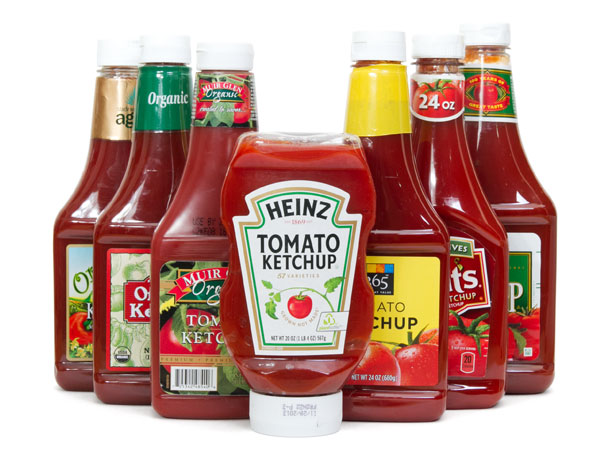I’ve been doing a lot of talking, teaching and pitching around the concept of brands, and it seems that a lot of people – including professionals in the brand business – still have wildly differing ideas about brands and what they are. And while this post is NOT intended to clear everything up in 500 words or less, I do think that looking at it from a different perspective will help. So let’s evaluate brands on the simple x/y coordinates of nature vs. nurture.
Let’s take a simple consumer category, like ketchup. If we’re developing a NEW ketchup brand, we’d have to fit it in the market alongside the primary players like Heinz and Hunt’s and Del Monte, and let’s throw in the niche marketer Annie’s who owns the “all-natural” position. Aside from the typical line extensions (organic, gluten-free, sugar free, etc.) not a very cluttered market at all.
The basic NATURE of brands in this category:
Ingredients
Texture
Flavor
If you were going to enter a competitor into the market, the brand would have to declare itself different by nature (a unique flavor, or a unique combination of ingredients, maybe they only source specific tomatoes, etc.) and then – and this is the important part – have to become different by nurture.
The way brands in this category are NURTURED:
Price
Packaging
Distribution
Merchandising
Advertising (national vs hyper-local)
Social Efforts
Publicity
Partnerships/Sponsorships
So we could develop a brand (let’s call it Kelly’s) and give it a certain NATURE so that it fits in the category and has a chance to carve out some market share. Let’s suppose Kelly’s is sourced using only organic plum tomatoes from Italy, packaged in a really cool NON-plastic carton, and is frequently preferred over Heinz during blind taste tests. (Lots of differentiation points there, and also lots of category parody.)
On its own, the brand’s nature should allow it to enter the market and do fairly well (given the right distribution.)
But here’s where you see that brands are NOT just the sum of what they’re made of.
For Kelly’s to survive – and ultimately, thrive – the real work would be in changing the hearts and minds of those who are in the market for ketchup to allow them to make “mental room” for a new player. With Heinz owning about 55% of the market, Hunt’s about 20%, Kelly’s would be competing with Del Monte and “all others” for a piece of the remaining 25% of the roughly $1 Billion ketchup market. At first. But given the right climate, the right amount of time and the right combination of nature and nurture, there’s no arguing that Kelly’s could ultimately unseat Heinz for the #1 spot.
But how much would that cost, and how long would that take?
The answer lies in how the brand is NURTURED. If the advertising is cool, and the brand selects some pretty cool partnerships and sponsorships, and doesn’t overly rely on price promotion, and does well on the b-to-b side with slotting and merchandising, and doesn’t suck, then it’s likely that nurturing won’t take too long.
However, if ANY of those things is slightly misaligned, and misperceptions ensue, then it will certainly elongate the process of adoption.
Brands are a phenomenon in two important ways. First, they’re a perceptual phenomenon. Brands don’t actually exist. As I’ve told my students, there’s no vault somewhere in Pittsburgh where the Heinz brand is “locked away.” It simply exists in the minds of consumers as a sum of experiences and interactions. And while all those versions from all those consumers are slightly different, they do share a basic collective complexion.
Second, brands are a cumulative phenomenon. Meaning that those experiences, interactions and overall perceptions are forged over time – good or bad – and the one-word phrase that you may connect with the brand (“rich,” “thick,” “sweet,” whatever,) gets more and more embedded over repeat impressions of that initial imprinting on your mind.
Until ultimately, brands are weighed in the moment of truth in the condiment aisle when the consumer ponders whether she wants “thick” or “sweet” or “rich” when it comes to what she’s putting on her next burger.
So – are brands nature or nurture? Yes.
But the real work begins ONLY after you’ve gotten everything right.
